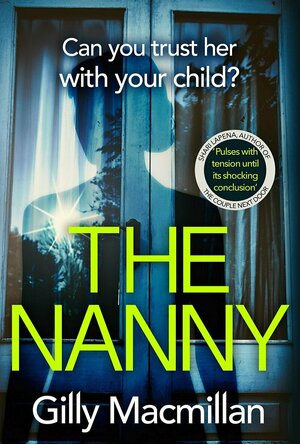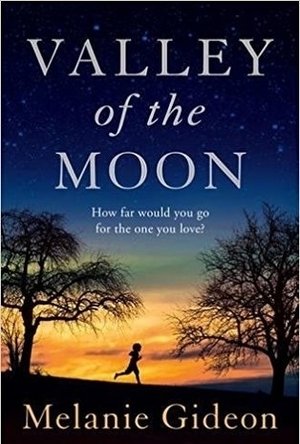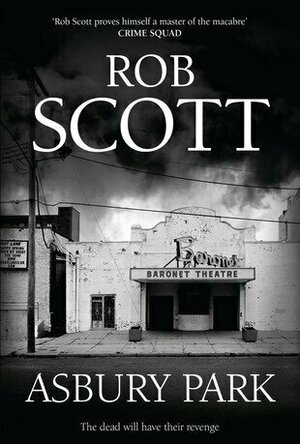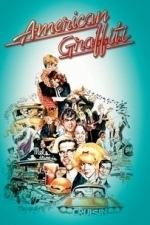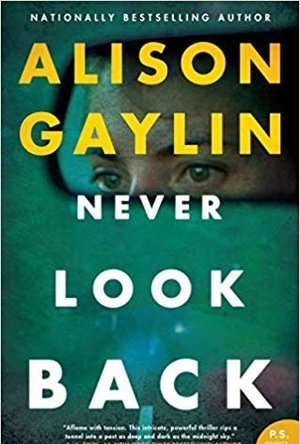"I'll never be able to change this place, but if we stay here long enough, I'm afraid it will change my daughter and me."
I've loved Gilly Macmillan and her books since I won one of them in a Librarything giveaway a few years ago. She's an excellent writer, and I quite enjoy how different each book is from the next. This one was very different and quite unexpected. It's told from a variety of alternating viewpoints--the primary ones being Jocelyn and her mother, Virginia, but we even get a local policeman and a mysterious woman dating back to the 1970s. I liked the way Macmillan wove all of of these perspectives together. At first, it seemed really easy to trust everyone, and then quickly, you realize that you can't be sure if you can believe either Jo or her mother.
I don't want to go too far or reveal too much, because it's probably better to let most of the plot reveal itself organically, but it's definitely easy to say that much of the book is a little befuddling (in a good way). I found myself drawn to Ruby, the young girl, and oddly, Virginia, despite her history as a pretty terrible parent. Jo frustrated me, with her somewhat naive nature. She would trust some things at face value, yet not others, and I wanted to shake her at points.
There are definitely some convoluted plot points in this one--there's quite a saga with the Holt legacy. I didn't really question it while I was reading, but after, I find myself wondering if it was all necessary. Still, I loved reading about the slightly faded grandeur of Lake Hall--it's just not something you get in America, and it's fun to picture when you read these type of novels. Macmillan does an excellent job of portraying her characters and the setting.
I definitely was caught up in the plot. I thought I had it figured out for a while, then I realized I didn't, and then the ending was a little crazy. I'm still not a 100% sure about it, but I appreciate Macmillan for embracing it. Overall, I enjoyed the varying viewpoints and the slightly fusty, aristocratic setting. I was interested in the characters and wondering what happened with Hannah. A few things seemed a little far-fetched, hence my 3.5-star rating, but still a good read.
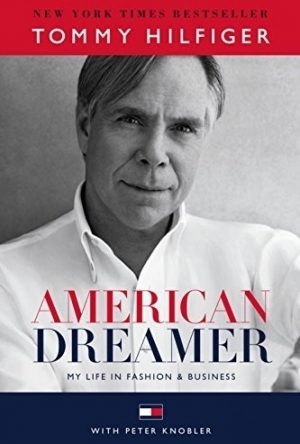
American Dreamer: My Life in Fashion & Business
Peter Knobler and Tommy Hilfiger
Book
In this tale of grit and glamour, setbacks and comebacks, business and pop culture icon Tommy...

Age, Sex, Location
Book
A hilarious and refreshingly honest foray into modern dating, Age, Sex, Location is Bridget Jones's...
Gareth von Kallenbach (980 KP) rated Cruella (2021) in Movies
May 26, 2021
Despite being delayed due to the Pandemic; Disney has scheduled the much-anticipated “Cruella” for release and I am happy to announce that the film is a Wickedly Delicious new entry into the series.
The story follows young Estella as she and her mom plan to start a new life in London in the 1960s. When tragedy strikes, the young girl finds herself on the streets and working a life of crime and grift with fellow street kids Jasper and Horace.
Flash forward to the 1970s and Estella (Emma Stone) toils away in a store cleaning while hoping for her shot in the world of fashion. When fate arrives and places Estella in the path of vain, self-centered, and vicious fashion magnate The Baroness (Emma Thompson); who hires Estella to begin her career in fashion.
The savage way The Baroness treats those around her intimidates Estella but her friends Jasper (Joel Fry) and Horace (Paul Walter Hauser); see this as an opportunity to rob from The Baroness and this places them at odds with Estella as her designs start to gain traction.
When situations clarify and things begin to evolve into a mission of revenge; Estella transforms into Cruella which had long been the name associated with the darker side of her personality.
Cruella takes the fashion world by storm for her innovative looks, bold designs, and theatrical events which upstage the Baroness at major fashion events.
With her sales and reputation in decline, The Baroness declares war on Cruella which sets a dark and sinister series of events into motion which drives the film into darker content then one may expect from a Disney film.
The cast is very strong as Stone and Thompson are amazing as they are both wicked and captivating without ever going to far over the top or extreme with their characters. The supporting cast is great as well as Fry who was hysterical in the series Plebs brings a depth to Jasper which takes him above just being a stumbling sidekick.
Mark Strong also does great work and elevated all the scenes in which he was in with his strong presence. While at first I wondered if we really needed to have this part of Cruella’s life told; the story is engaging and the cast is fantastic which makes this movie dark and delightful.
While elements of it may not be ideal for younger viewers; the story was captivating and the performances were amazingly engaging.
The film ran about two hours and 10 minutes and seemed a bit long in one segment but the film does regroup brings the story home. There is a mid-credit scene audiences will want to stay for as it was an unexpected and very charming nod to what is to come and is not to be missed.
It will be interesting to see if the film is the hit that I expect it to be if Disney will consider more films in the series as it would be amazing to see this cast return for further wickedly dark adventures.
4 stars out of 5

PORTER magazine UK
Magazines & Newspapers and Shopping
App
2017 has been an extraordinary year for women as they’ve come together in an unprecedented show of...
Hazel (1853 KP) rated Valley of the Moon in Books
Sep 5, 2017
For fans of The Time Traveler’s Wife (Niffenegger, 2003) this captivating story by Melanie Gideon is an alluring, spellbinding work of fiction about loving, being loved and finding somewhere you belong. With a touch of time travel in an otherwise typical reality, Valley of the Moon will excite, enrapture and touch readers’ hearts.
It is difficult to give a synoptic review without giving too much of the plot away. In short, the book contains the two lives of complete strangers who meet under extremely unlikely circumstances. It is 1975 and Lux Lysander is struggling to make ends meet as a single mother in San Francisco. Estranged from her parents, Benno has become her life; Lux would do anything for him. The other half of the story begins in 1906 in the Californian Sonoma Valley. Joseph has achieved his dream of creating an Edenic community where races and classes can live in harmony. Greengage is a self-sufficient society where everyone is seen as equal, however, something happens to shake up the peace – literally. A huge earthquake mysteriously leaves the valley unharmed but completely surrounded by a deadly fog. No one can leave and no one can enter, that is until Lux does.
Until the two characters’ lives collide, the narrative is fairly typical, but it quickly takes on a theme that most minds would attempt to debunk. Through a wall of fog, Lux can pass between 1975 and 1906, whereas Joseph and his friends can only stay in their own timeline. Lux begins to live a double life: one with her son Benno and one with the antiquated lifestyle of the Greengage community. Unfortunately, it is only possible to pass through the fog on a fall moon, and not necessarily every month.
Lux’s modern appearance and colloquialisms baffle the community but she soon finds herself a place amongst the inhabitants. For a while, Lux is able to keep her two lives separate, but one slip up causes her to temporarily lose the love and trust of her only son. Torn between her own flesh and blood and the only place she feels she belongs, Lux has to decide how far she would go for the people she loves.
One of the key themes of the novel is relationship. Although romance develops toward the latter stages of the story, the majority is focused on familial love and love between friends. Lux and Benno’s relationship is particularly important, especially when their love becomes strained by Lux’s secret dalliance with the past. The other significant theme is about finding oneself. Lux lives in an era where, despite developments in women’s equality, single mothers are still shunned. Conversely, in 1906 where historically things were worse for women, the egalitarian society feels much more like home.
Lux’s temerity is to be admired as she continues to visit the past despite it being beyond the bounds of possibility. More applaudable is her determination to win back her son as well as her distant parents.
Despite being set for the most part in the 1970s and 80s, Valley of the Moon has a futuristic air about it, with an element of fantasy and science fiction. It is almost a version of The Lion, the Witch and the Wardrobe (Lewis, 1950) but for adults, with more realistic themes. Melanie Gideon admits that she got the idea for the novel from the film Brigadoon (1954) in which the protagonist stumbles across a magical land in the woods. With similarities, Gideon has created her own version of this fairy-tale-like scenario.
Journeying through a range of emotions, Valley of the Moon is a story that engages readers from beginning to end. With ups and downs, the author explores the lives and personalities of the main characters, which develop beautifully over time. This book is not one likely to disappoint its readers.
Phil Leader (619 KP) rated Asbury Park in Books
Nov 8, 2019
Doyle's problems are many: His wife has discovered that he had an affair, he is in withdrawal from his drug and alcohol abuse and he is still recovering from being shot. But far from getting away from it all his vacation just throws mysterious deaths at Doyle and strange things happen. He hears Pink Floyd's Wish You Were Here playing from what seems like every car that passes and every shop he goes into as well as an old callope fairground tune. He starts to persuade himself that events are connected and sets out to find out what is going on.
This book definitely follows its own path and refused to be pigeon- holed into one genre or another. In the main this is a police procedural with Doyle assisting the local police with a gang related shooting and his own investigations into events that occurred in the 1970s in Canada. But the weirdness of the Pink Floyd, scratches and greasepaint (to name just a few of the odd occurrences that Doyle encounters) takes it beyond this and into the realms of the paranormal with Doyle convinced he is being haunted by the ghost of a dead teenager - or that he is going insane.
All this means that it is going to divide opinion (and quick check of the scores given to the book confirm that). It is not a standard police procedural so will disappoint if that is what is expected. But neither is it a ghost or horror story in the classic sense and so will disappoint if that is what is expected as well. What it is is an exploration of despair, revenge and redemption set against the decaying backdrop of the faded glory of the towns between Asbury Park and Spring Lake. Take the story on its own merits and go where it leads is my advice. Live a little.
I really liked the writing. There is a very noir feel to the way Doyle narrates the events first person and a certain nihilism to a lot of his observations that can be quite amusing. The other characters are also good and his interations with them very well written. Hodges the local detective he both assists and irritates is great as is her right hand man, Ed Hess to name just two.
The pace is slow, giving the story time to unfold but never dull or boring. When events do occur they are almost jarring and some of the more supernatural experiences of Doyle did send shivers down my spine.
The revelations of the story behind everything does work (in the terms of the book) and closure is finally achieved at the end, I couldn't think of a loose end that wasn't tidied up. Yes there isn't a rational explanation for everything - at least not if filtered by Doyle's somewhat damaged perception - but there is an explanation.
I didn't hesitate to give this book 5 stars. It was one of those that I enjoyed reading hugely and didn't want to get to the end... but wanted to get to the end to find out what happened. Overall I rate this book very highly.
Rating: Lots of violence, language and dead bodies
Darren (1599 KP) rated American Graffiti (1973) in Movies
Nov 21, 2019
Characters – Curt has always enjoyed his time on the strip, he knows everybody and is one of the most popular guys around, he was due to head of the college, but hasn’t made his mind up yet, despite it needing to be read for his next day, he ends up trying to spend his time chasing a mysterious woman around town all night. Steve has always planned his life out, he is going off to college and he is ready to make his relationship more open while they are separated, here he gets to learn about his relationship even if his best friend might not be joining him in college. John is the friend that has always been known for his ability with cars, he has a reputation around town with the police following him around and now he is starting to see the future where his friends are doing a lot more than him and gets stuck with a younger girl for the night, where he starts to see a brighter side to his future. Terry has always been the butt of most of the jokes between the friends, now he gets Steve’s car to look after he spends the night trying to find himself a woman and impress her with his lines.
Performances – When we look at the cast, Richard Dreyfuss is great through the film showing us a character that can get plenty of laughs and is quick on his feet. Ron Howard brings the character we know him for is always going to be easy for him to play. Paul Le Mat brings the typical bad boy to life that does show how he bought us a level of sympathy to the character. Charles Martin Smith brings the geeky sounding character out which become one of the most popular characters in these teen comedies for years to come.
Story – The story here follows four friends on the last day of summer before college is due to start, we see how the four have a different adventure on this night, which will help them discover what they want next in their lives. This is a story that shows just how difficult life is when you take the next step, leaving school is one of the first and biggest anybody will take, with the uncertainty being there for everybody involved, part of you will want to stay close to what you already had, while other sides of this will see you wanting to see what is next. This story mixes all of this together through the film with little effort and makes you believe these people could be real, while certain aspects will have dated here, with a new generation, back n the 1970s this would have been the idea of the house party in the 80s or 90s and wild adventure the modern youth would be having.
Comedy – The comedy in this film would be right up there with any teen comedies, it would have gotten more laughs for when it was released, rather than the ones you would expect to see now.
Settings – The film is set in one hang out location known as the strip, this will be the location where we get all the hang outs you would expect for teens in this generation.
Scene of the Movie – Terry’s attempts to get boozes.
That Moment That Annoyed Me – The world involved does seem to have dated.
Final Thoughts – This is a wonderful look at teenage life in the 70s it shows us just how close the friendships were, how hard the changes coming were and just what was left for the people in life.
Overall: Beautiful Look at the 70s.
Rating
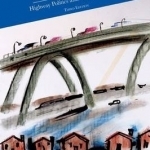
Interstate: Express Highway Politics, 1939-2009
Book
This new, expanded edition brings the story of the Interstates into the twenty-first century. It...
Kristy H (1252 KP) rated Never Look Back in Books
Sep 2, 2019
This was an excellent thriller that had me hooked from the first page. It's dark, gritty, and utterly mesmerizing. When I started it, I was thinking to myself, not another podcast mystery, but little did I know... this book is totally addictive and brings in the podcast element in a seamless, fresh way.
It's told from the perspective of several of our main characters--particularly Robin and Quentin. We also get excerpts from a school assignment of April's when she was fifteen: letters to her future child. These slowly reveal what happened during the killings, and they are told in a spot-on voice of a fifteen-year-old girl. The way everything is woven together is perfect: I found myself completely captivated and read basically the last half of the book in one breathless setting, staying up past my bedtime to finish it.
We learn that both Gabriel and April died in a fire at the site of their last attempted murder. So when Quentin receives a tip claiming that April Cooper is still alive, it changes everything, including the focus of his podcast. When he starts to believe that Robin's mother is April, things get even more interesting. I loved the suspense--constantly wondering if April was alive and if she was, who she could be. And then, there's the aspect of was April "good" or "bad" during the killings. So many people blamed her for the deaths of their loved ones, and nothing is black or white in this book.
Even Quentin. Since his past is strongly affected by the murders, we find ourselves wondering if we can trust him, too. Quentin's grandfather basically gave up raising his daughter, Kate--Quentin's mother--after the death of his wife and young daughter. As such, Quentin's own mother wasn't much of a parent to him. Quentin's own bitterness and anger shines through--a strong theme in the book. Can we rely on someone so angry, we wonder? I felt for him, and his devoted husband and loving best friend and podcast partner. So many of the characters are intense, and each is so well-crafted and unique. Each flew off the page.
This is often a dark book, and there are many scenes of violence. But, for me, it was the emotional scenes that were the toughest to read. There are many touching moments, too, and I found myself attached to several of the characters. Reading young April's letters was quite a feat. Gaylin is such an excellent writer, and she just pulls you into the story so effortlessly--you feel as if you are there with her characters. Throw in some great twists and turns and this is an excellent and suspenseful novel.
The ending was a tough one, but I get it. Overall, I really enjoyed this dark psychological thriller. I am just loving Gaylin's recent books and need to go back and read some of her previous works (there's a little Brenna Spector shoutout in this one for those of you who are fans). Definitely recommend! 4.5 stars.
